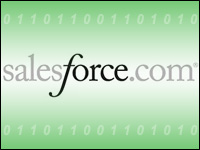
On-demand applications and cloud computing often mean different things to different people. For developers, Software as a Service (SaaS) is quickly evolving not only as a means to deliver applications — but as the means to develop them, too.
Taking the notion of “development as a service” to its full potential is the logic behind Platform as a Service (PaaS). To help understand the power of PaaS, we speak in this sponsored podcast to one of the early PaaS pioneers and providers, Bungee Labs.
Learn how software development is entering a new era in this discussion with Phil Wainewright, independent analyst and fellow ZDNet SaaS blogger, as well as with Alex Barnett, the vice president of community and blogger at Bungee Labs. Moderation from yours truly.
The Migration Has Begun
Here are some excerpts:
Alex Barnett: Everything we know is moving to the Web. And what that means in tangible terms is that businesses and service providers and software companies are providing layers of functionality and data that are native to the Web or are Web-oriented.
Dana Gardner: It’s important when we look at the speed of development to appreciate that three or four folks in a garage in Northern California can come up with a mashed-up service and go out and create a social networking company, for example, quick and easy — and at low expense. And then, here you are in an enterprise, taking six months to work through a requirements process. It seems as if something has got to change.
Barnett: IT managers feel the pressure to be able to more rapidly to develop applications and access the data that are based on and being made available through Web APIs (application programming interfaces). And developers are able to then connect, develop and build-out new applications based on distributed data, on distributed functionality and react to the business needs.
If you think about customer relationship management (CRM) systems or a certain kind of database — they are in silos, they are disconnected, or they are very expensive and require lots of proprietary knowledge in order to be able to access the data, and therefore the value. What we are seeing with things like Web oriented architecture (WOA) is a materialization of how we get out of that frustration as an industry — how we get out of that frustration from business. We want the data and the business intelligence from it, and to be able to get at that from a business perspective.
Unlocking Data’s Potential
Phil Wainewright: What we’re seeing develop at the moment is kind of a two-tier information technology. On the one hand, you have all of the existing on-premise, legacy applications and all that data that Alex was describing. It’s locked away, and IT managers are really puzzling over and grappling with the issue of how to unlock that data. How do they make it more accessible? How do they build more agility into applications infrastructure?
They are looking at things like service-oriented architecture (SOA) and other ways of connecting and integrating the data, while automating business processes within the organization. So that’s one tier.
The other tier that’s developing is this Web-oriented tier, all of these APIs and in-the-cloud resources and applications that are out there on the Web. To take advantage of those connections, you need to build a completely new infrastructure, which is different from the existing infrastructure within the firewall. It has to cope with connecting to external resources, and it has to have different kinds of security, different kinds of identity management.
Building a robust infrastructure to do this is very, very hard. That’s one of the reasons why a lot of enterprises are holding back, and are therefore missing agile opportunities. That’s one of the roles that the PaaS can provide.
Barnett: [And] that’s what we are trying to define at Bungee Labs. PaaS is one of those terms that we’re going to be hearing more and more. And they are going to be different — varying levels of definition and interpretation of what that means.
But what we’ve done is put a stake in the ground in this respect, and then saying that in order to really be a PaaS — and not just any one of those single pieces that you’ve mentioned plus more individual pieces — that you need to be able to provide the end-to-end services to really call it a “platform.”
From the developer’s standpoint, which is the development cycle, this means the tools that they need to develop applications, to be able to then test those applications, to be able to connect to Web services and to combine them, and to have all those kinds of capabilities — and to then deploy and to make those applications instantly available to the business users. Literally, we mean a URL that is the end-point for the end-user. From that, they can start consuming the application.
The on-demand CRM providers like NetSuite, Salesforce.com, Oracle, and now we’re hearing Microsoft Dynamics, are providing Web services layers over the functionality that they provide to the end users.
We’ve always been able to do a certain level of functional customization around those applications, but when you have the Web services that provide access to the data — on the programmatic level — you gain a whole new opportunity to merge, in terms of levels of customization against an existing CRM application, or ERP systems.
This pushes out the expansibility and the increased functionality of the investments that they’re making. It allows for those services to be able to expand that further in a cloud-orientated, Web-orientated way.
Wainewright: You really destroy the misconception that if you go to SaaS you can’t do customization and you can’t do integration. It means that we’re actually doing better customization and better integration than you are capable of doing with many on-premises systems, because it’s actually a more flexible customization. It’s more cost-effective integration because it’s a shared service.
What previously seemed like disadvantages of the SaaS model can be turned on their head and turned into advantages.
Dana Gardner is president and principal analyst at Interarbor Solutions, which tracks trends, delivers forecasts and interprets the competitive landscape of enterprise applications and software infrastructure markets for clients. He also produces BriefingsDirect sponsored podcasts. Disclosure: Bungee Labs sponsored this podcast.
















































